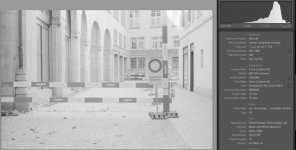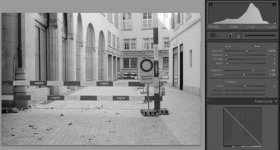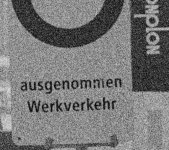Hi both, thanks for your reply.
Fotohuis - yes I really like Fomadon Excel, use it all the time, especially with Foma 400. I find powder developers somewhat inconvenient, though, and tend to prefer concentrated ones at the moment.
Back to Spur Acurol-N: I decided to go ahead and test the Acurol-N, mostly out of curiosity. I purchased a small bottle of the product, which came with a data sheet with processing & handling recommendations, including film-specific ones.
Interestingly, the data sheet has data for Fomapan 200, too. I tend to use Fomadon R09 exclusively at 1+50, and the corresponding Acurol-N recipe for Fomapan 200, according to the data sheet, is as follows:
-Temperature: 20 C degrees
-Inversion plan: 30 sec permanently, then two inversions (for 120 film) x minute
-Film speed: 125 ISO
-Time: 11 minutes
I was a bit surprised about the indication to expose at 125 ISO. I routinely expose Foma 200 in R09 at 160 or box speed, without problems. I decided to stick to the above, anyway, and exposed at 125EI.
@CharlesDAMorgan - as I understand it this is what you found when you mentioned you dislike the fact that the film must be pulled to work with this developer?
Anyway, I have just finished processing the test film and immediately after hanging the film to dry I noticed something odd - the extreme contrast of the negatives. Highlights appear very dense, and shadows almost transparent, though both extremes seem to somewhat retain some detail.
I have not significantly altered any other variables in my shooting (same camera I used before, same metering, incident via a Sekonic meter). I wonder if it's a problem of overdevelopment, overagitation, poor metering on my side, or a combination of the above. Thing is, I've never seen such contrast on my negatives before, using foma film and Fomadon R09/LQN/Excel developers.
I attach a sample film strip to hopefully clarify:
Of the three test shots shown, the one I'm more confident about is n.8 (N.5 and n.6/7 were shot in rather contrasty conditions, and I can't exclude a large metering error on my side). I have scanned and inverted n.8 using my standard workflow and this is what I can come up with
The white building (top-right) does retain some detail, however it's very grainy - I wonder if this is due to my scanner being unable to fully 'penetrate' the sooty black mass in the negative and returning a 'noisy' scan?
Anyhow, I'm sure I can improve on the development side - should I try reducing development to 10 minutes? Any other recommendations welcome.






